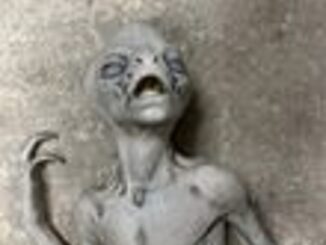The Meaning of Christmas Decorations
A Season of Tradition and Celebration
As the calendar turns to December, the world begins to twinkle with the lights, colors, and joyous sounds of the holiday season. For many, Christmas is a time of tradition, reflection, and celebration. A cornerstone of this festive season is the art of decorating our homes with an array of ornaments, lights, and greenery. However, these Christmas decorations are more than just visually pleasing additions to our living spaces; they carry deep and meaningful symbolism that enrich the spirit of Christmas. In this blog post, we will delve into the profound significance behind some of the most beloved Christmas decorations.

1. Star:
According to legend, on Christmas day, when Jesus was just born, a brilliant star appeared in the sky. That light radiated for hundreds of miles and could still be seen.
The wise men (according to legend, the three kings) saw that brilliant aura, and believed that if they followed the light of the star, they would surely find a miracle. From there, following the guidance of light, they reached Bethlehem, where the Baby Jesus was born. These three men knelt before God and offered three precious gifts: gold, frankincense and myrrh.
‘Gold’ represents the glory of God.
‘Frankincense’ demonstrates the role of God in the future as the only High Priest, the only Mediator – to intercede and save humanity’s sins with God.

And ‘myrrh’ – something people use to embalm the dead, has the meaning of predicting the departure of God as a complete atonement offering for humanity.
Since then, the sparkling star on top of the pine tree has become a meaningful symbol during the Christmas season and is hung in the highest place of the church bell tower, the most luxurious place in synagogues and religious establishments on Christmas Eve. was born to remember the above story. Therefore, the meaning of the star also symbolizes God’s miracles.
2. Globe:

Also known as round shaped pearls, decorated with regular wing or leaf motifs, often hung in the shape of snowflakes on Christmas trees. According to legend, mothers believe that this orb carries strength and optimism, helping children become smarter and more resilient after each challenge.

3. J-shaped candy cane:

In 1800, an Indian candy maker bent one of his candy bars into the shape of a candy cane, representing the love and sacrifice of Jesus. The white color represents God’s purity and innocence, the three small stripes represent the pain that God endured before his death, and the one dark stripe symbolizes the blood that God shed for humanity. When you look at the candy cane, you will see that it is exactly like the stick used by the shepherd, because according to Christianity, Jesus is the shepherd of people.

4. Socks:

Legend has it that there was a family with 3 young girls of marriageable age but no guy was interested because the family was too poor. Bishop Myra took pity and threw the gold coins down the chimney of the three girls’ house. The gold coins fell onto the stockings she hung inside the furnace system. From then on, everyone hung honey next to the system’s furnace in the hope of receiving the gift they wished for.

5. Candle:

Before flashing electric lights, candles were an indispensable item on every family tree and party table. Its magical light creates a cozy and romantic atmosphere for Christmas night. In addition, candles are a symbol of peace and happiness.

6. Santa Claus:

The legend of Santa Claus was started by a Saint named Nicholas. He often disguises himself to bring gifts to poor children. When mentioning Santa Claus, people immediately think of the sleigh and reindeer that travel around the world with him to deliver gifts to good children. The image of Santa Claus represents the main meaning of Christmas: bringing love to everyone.
7. Acorns:

According to legend, the Magi were told by a Saint that the oak tree was not a Holy tree. They decided to cut down the oak tree and wherever the oak tree fell, everything under it was crushed. Only a small pine tree remains. So people decided to use the pine tree as a tree to symbolize Jesus and the acorns were used as decorations. It is said that although the oak tree is not a Holy tree, from a small oak seed it can become a sturdy and large oak tree, or that even though the beginnings are small and humble, they can achieve great things great achievement.
8. Christmas cards:

Christmas cards quickly exploded in England when the government passed a law allowing people to send letters to anywhere in the country cheaply. After that, this trend gradually spread to neighboring countries. Louis Prang – a German-born printer living in the US began launching high-quality printed cards and he was quickly labeled the “father of Christmas cards”. In particular, people often write down good wishes for each other and what they wish for and then hang them on the Christmas tree in the hope that it will come true.
9. Bell:

The ringing bells on Christmas day always make people feel excited. The jingling sound of the bell is also a message urging people to quickly complete their work to reunite with relatives and family.



